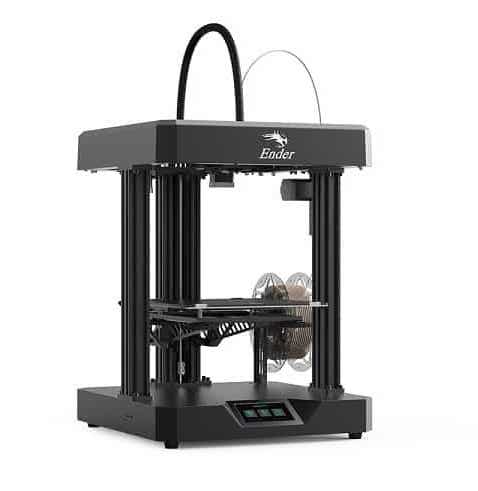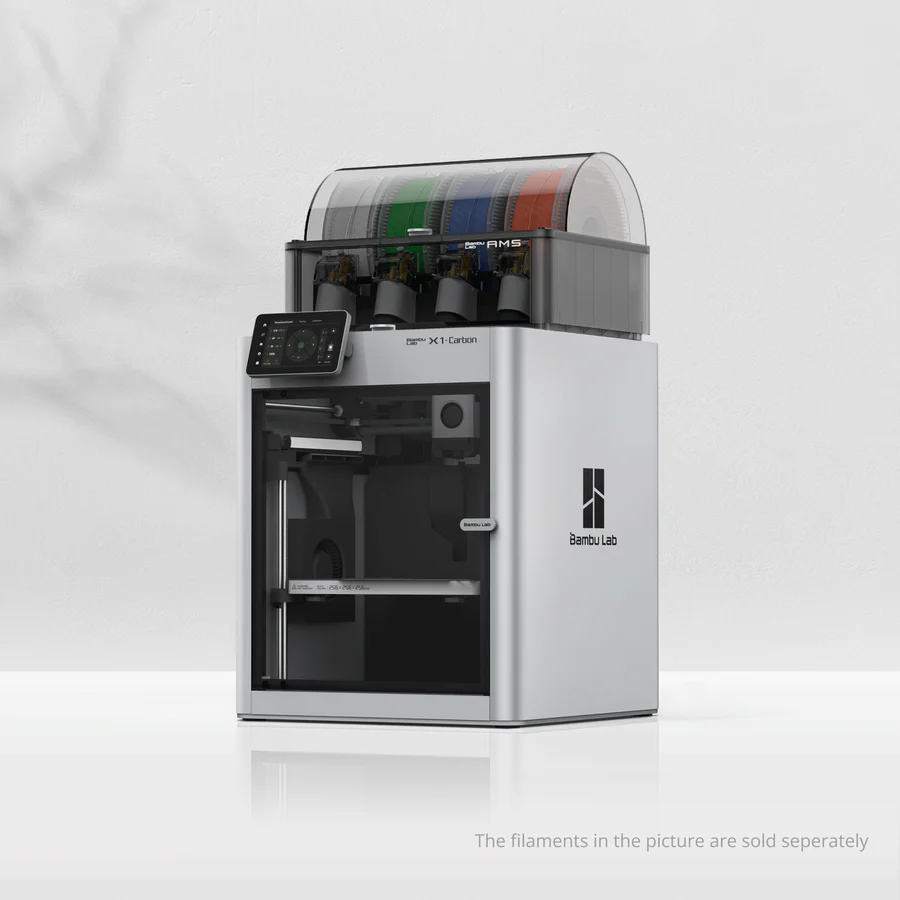Compare Ender 7 vs X1 carbon
Comparison between the best 3D printers
Choose the best 3D printer at the best price. The cheapest 3D printers are here.
Buy a 3D printer here with 3D Fila.
 |
 |
|
| Model | Ender 7[BUY Ender 7] |
X1 carbon |
| Printing Material | Filament | Filament |
| Buy Filament for Creality 3D Ender 7 | Buy Filament forBambu Lab X1 carbon | |
| Estimated price | $429,00 | $1449,00 |
| Manufacturer | Creality 3D | Bambu Lab |
| Release Year | 2021 | 2023 |
| Print Volume [mm] | 250x250x300 | 256x256x256 |
| Printer Size [mm] | 430x460x570 | 389x389x457 |
| Weight [kg] | 17,2 | 14,13 |
| Power Loss Recovery | YES | YES |
| Enclosed printer | NO | YES |
| Bed Leveling | Manual | Automatic |
| Filament End Sensor | YES | YES |
| Bed type | Heated | Heated |
| Power supply system | Bowden | Direct Drive |
| Standard nozzle | 0,4 | 0,4 |
| Maximum Nozzle Temperature [°C] | 260 | 300 |
| Maximum Bed Temperature [°C] | 100 | 120 |
| Maximum printing speed [mm/s] | 250 | 500 |
| Filament holder | YES | YES |
| Camera for supervision | NO | NO |
| Recommended filaments | PLA, PETG, Tritan, Flex, ABS | PLA, PETG, TPU, PVA, PA, PA-CF, Nylon, PC |
| Recommended slicers | Cura, Simplify, Slic3r, IdeaMaker | Bambu Studio, Super Slicer, Cura, Prusa Slicer, Orca |
| Maximum Resolution [mm] | 0,1 | 0,1 |
| Processor | Creality CR-FDM V.2.4.S1_V101 32bits | Quad ARM A7 1.2 GHz |
| Display | Display touchscreen 4,3'' | Touchscreen 5'' |
| Power Supply | 110/220V / 350W | 350 W |
| Connectivity | SD / USB | Wifi, Bambu bus, Cartão SD |
| Operating systems | Windows, Mac, Linux | Windows, Linux, Macbook |
| Date of registration in the system | 2022-11-04 | 2024-04-10 |
| Release date | 2021 | 2023 |
| Extra features | Crealitys Ender 7 printer offers remarkable print speeds, utilizing CoreXY kinematics for precise and fast movement. With a 250x250x300mm build area, dual direct extruder, and custom hotend, the Ender 7 is capable of printing at high speeds, although quality may suffer on smaller prints. Assembly is relatively straightforward, but the machine is noisy and can get hot. Its true speed potential is most noticeable on larger prints, where it outperforms its competitors. | The Bambu Lab X1 Carbon revolutionizes 3D printing with stunning design, high print speeds, and a streamlined user experience. It stands out with its CoreXY system, a hotend capable of reaching 300°C, allowing for a wide range of filaments. Its LiDAR-assisted bed leveling system, vibration compensation, and AMS multicolor printing capability raise the industry standard. Print quality is impressive, with the ability to fine-tune for perfection. The X1 Carbon, with its closed build volume, not only promises but also delivers one of the most advanced 3D printing experiences available to consumers. |
| Support for multiple colors and materials (AMS and CFS) | NO | YES |
Notes * |
||
| Cost-benefit | 7 / 10 | 7 / 10 |
| Hardware | 2.4 / 10 | 6.4 / 10 |
| Tela | . | . |
| Print volume | 4 / 10 | 4 / 10 |
| Performance | 2 / 10 | 4 / 10 |
| [BUY Ender 7] |
Conclusion |
| In comparing the Creality Ender 7 and the Bambu Lab X1 Carbon, there are significant differences in features, capabilities, and pricing that potential buyers should consider. The Ender 7, with a lower price point, offers an excellent entry-level option for those interested in speed and straightforward assembly. Its CoreXY kinematics enable impressive print speeds, and while it has a slightly larger build volume and a variety of compatible filaments, it requires manual bed leveling and lacks enclosure, which can be a drawback for beginners. The printer boasts dual direct extrusion, but while it excels in larger prints, quality may diminish with smaller ones. On the other hand, the Bambu Lab X1 Carbon, albeit at a premium price, brings advanced features. Its automated systems, including LiDAR-assisted bed leveling and support for multiple filament types, position it as a cutting-edge choice for serious enthusiasts and professionals. With a higher maximum nozzle temperature and print speed, the X1 Carbon can handle complex materials and offers exceptional print quality, making it suitable for a wider array of applications. In summary, if budget constraints are a primary concern and users are looking for quick, decent printing capabilities, the Ender 7 is a solid choice. However, for those willing to invest more for enhanced performance, versatility, and advanced features, the X1 Carbon stands out as a leading option in the 3D printer market. Ultimately, the decision will depend on the user’s specific needs, printing ambitions, and budget. |

